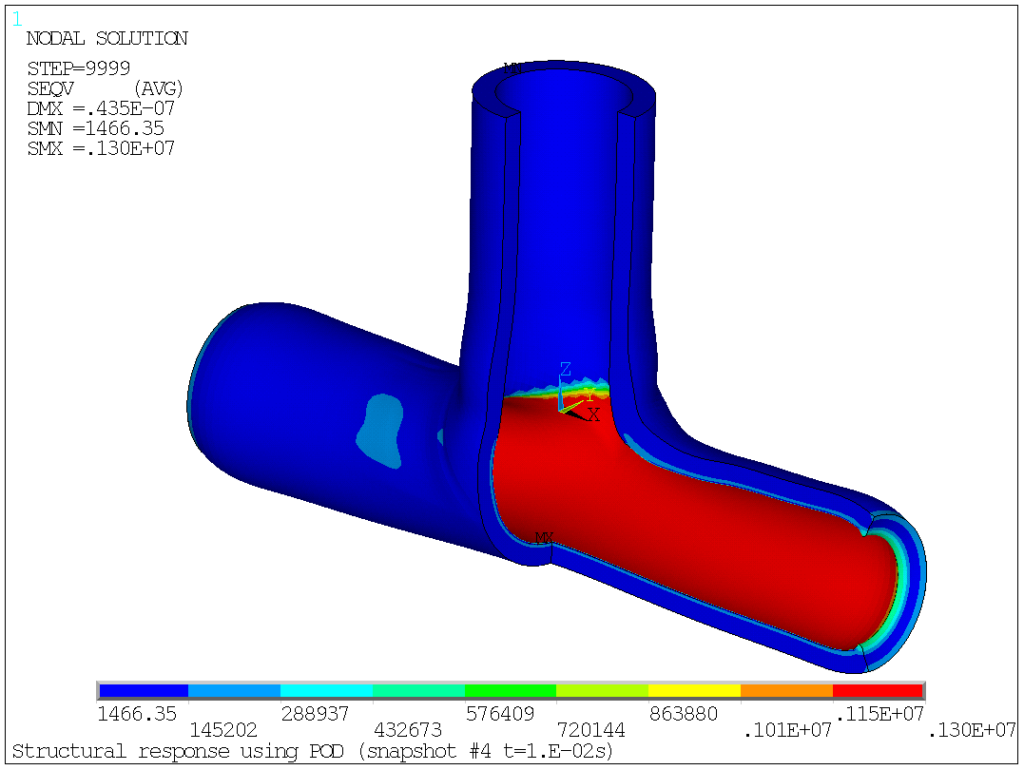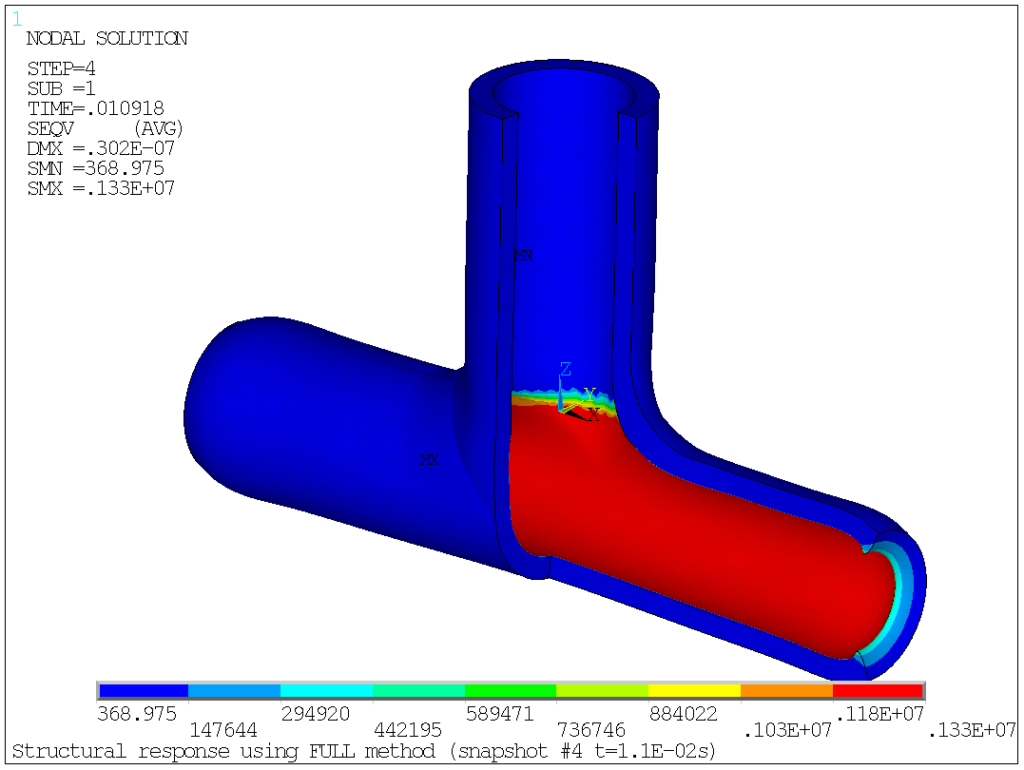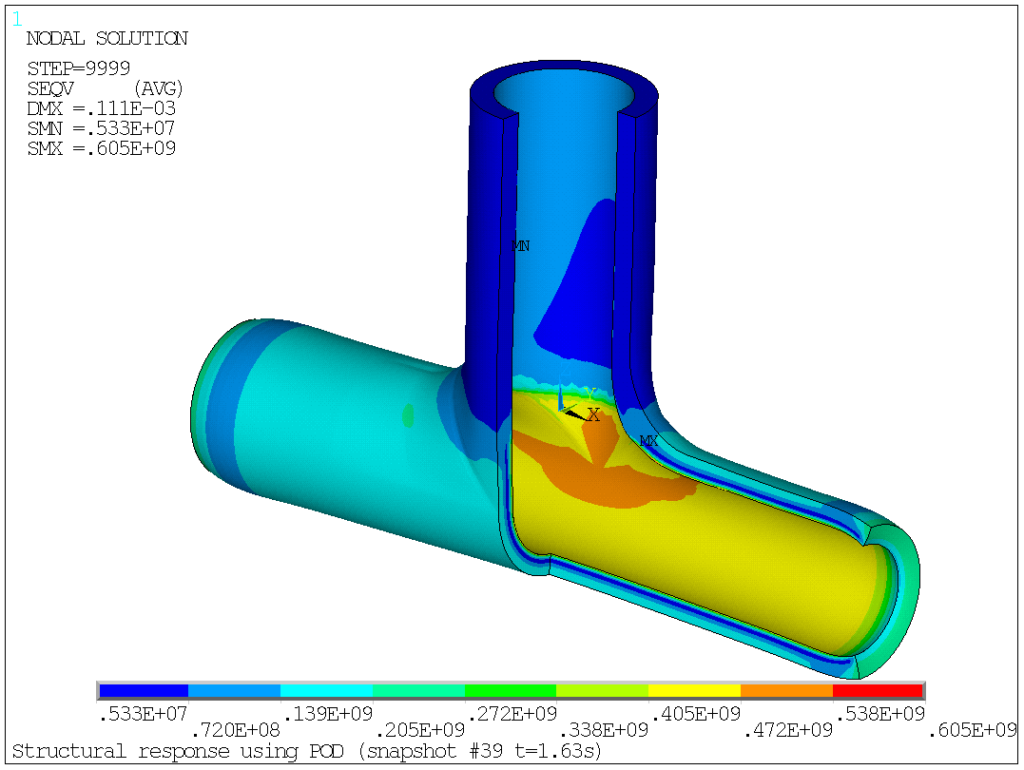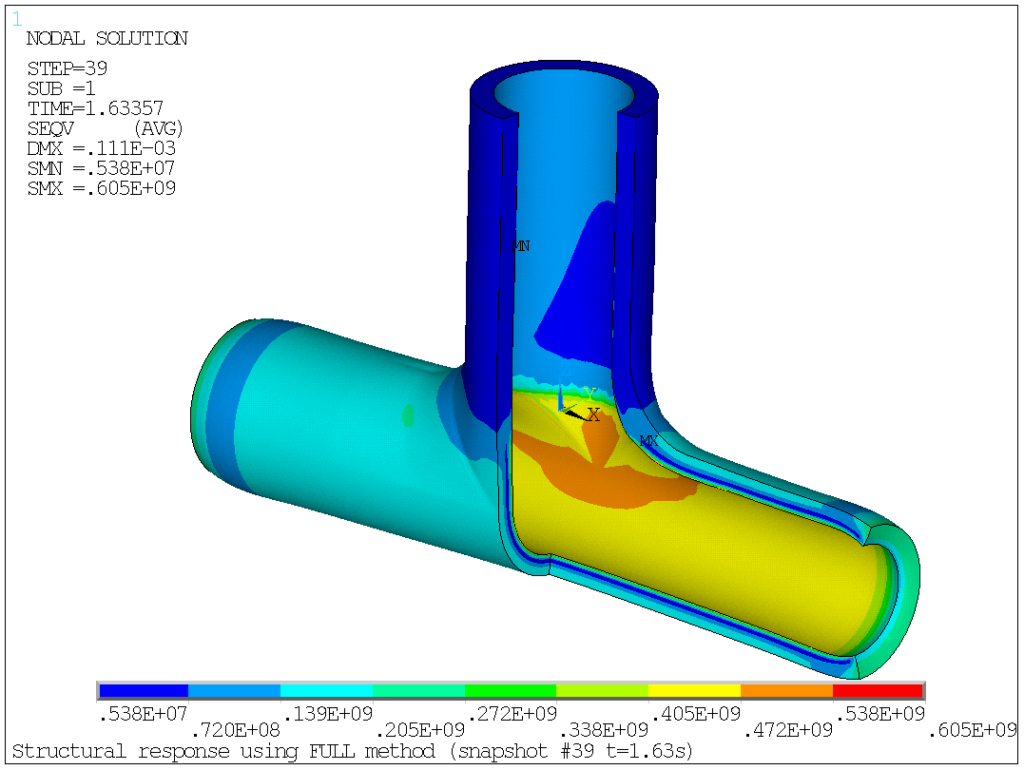From thermal to structural
As long as thermal quantities are concerned, we can largely accept to work with a set of 7 POD vectors. Going further, we now need to solve for the structural response of each of these 7 temperature patterns, and linearly combine the results to obtain actual physical quantities (in practice, we just need to multiply each resulting vector by the corresponding amplitude, and do the sum. This is performed using a series of LCFACT/LCADD commands).
Namely, for each time points, we will define a now “load case” in POST1, like so
lczero
lcdef,erase
*do,ind,1,nbSingularValues
! LCDEF, LCNO, LSTEP, SBSTEP, KIMG
lcdef,ind,ind,1
*enddoAnd then we do the linear combination of results
lcfact,1,SigmaVconj(1,ind_step)
lcase,1
*do,indVec,2,nbSingularValues
lcfact,indVec,SigmaVconj(indVec,ind_step)
lcoper,add,indVec
*enddoNow, we should compare results obtained using both approaches. Again, what we are looking after local stress levels, so let’s see how the results compare. We begin with the earliest phase of the transient, where the diffusion process starts. Although this is not the time point where we would expect the largest mechanical stress, this is clearly at those early stages that the largest deviation between both methods should exist (because the local, short lived temperature patterns will be “discarded” in the POD process as being non-significant).
For example, at time=0.01s, the peak stress intensity if found to be equal to 1.30 and 1.33Mpa for the POD and the full method, respectively. Needless to say, this is well below engineering accuracy. What happens at later stages of the transient?


Between t=1 and 2s, the largest stress intensity values are observed. Namely, using the POD reduction, max stress level is obtained at time=1.6s, and the stress (SEQV) level is equal to 605MPa (above the elastic limit, by the way). With the FULL method, this value is also estimated to be equal 605MPa. So, both methods do provide indistinguishable results.


And, by the way, in case you are suspecting by nature-which is definitely a healthy disease to have if you are an engineer working for safety related components- this is not coincidental: the results also do perfectly match for the preceding and following time points.
